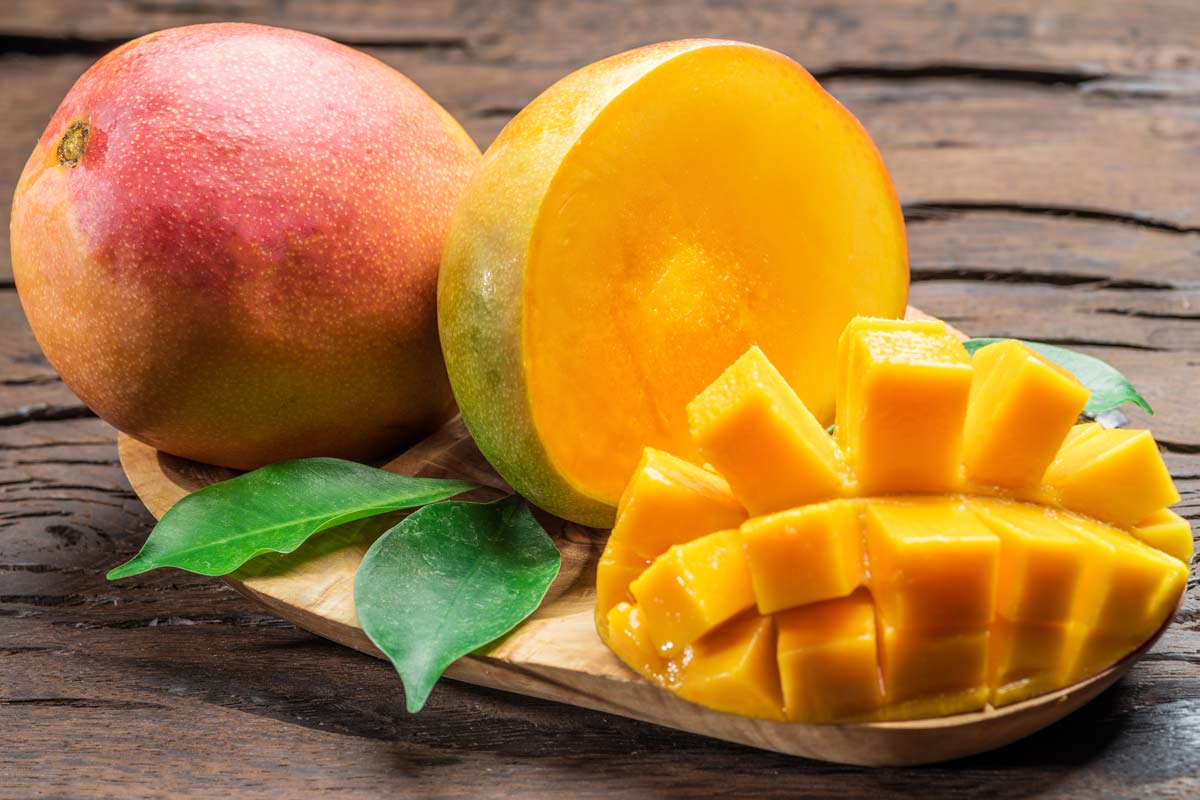
Mango fruit is one of the most popular and nutritionally rich fruits with a unique taste, fragrance, flavor and health, making it number one among new foods labeled as “super fruits”.
Mango is a delicious seasonal fruit grown in the tropics. The tree is believed to be native to the sub-Himalayan plains of the Indian subcontinent. Botanically, this exotic fruit belongs to the family of Anacardiaceae, a family that also includes numerous species of tropical flowering fruit trees such as cashew and pistachio.
The mango is a tropical tree grown in many regions of India, and now its cultivation has spread throughout the world in many continents, as in Spain in the area of the Axarquia, which after flowering, its fruits grow at the end of a long stalk, similar to a rope, with sometimes more than one fruit per stalk.
Each fruit is 5 to 15 cm long and 4 to 10 cm wide, and has a typical ‘mango’ shape, or sometimes oval or round. They weigh between 150 g and about 750 g. The outer skin (pericarp) is smooth and green in unripe mangoes, but turns into golden yellow, crimson red, yellow or orange-red ripe fruit, depending on the type of cultivar. The fresh mango season lasts from April to August.

The mango comes in different shapes and sizes depending on the type of crop. Inside, its flesh (mesocarp) is juicy, yellow-orange in color with numerous soft fibrils radiating from its flat, oval bone in the center (which envelops a single large kidney-shaped seed). It has a pleasant and rich taste and has a sweet flavour with a slight acidity. High quality mango fruit should have very little fibre composition and minimal acidity. The mango stone or seed may have a single embryo or sometimes be polybrionic.
Mango Health Benefits
The mango fruit is rich in prebiotic dietary fiber, vitamins, minerals and polyphenolic flavonoid antioxidant compounds. According to a new research study, mango fruit has been found to protect against colon cancer, breast cancer, leukemia and prostate cancer. Several test studies suggest that the polyphenolic antioxidant compounds in mango are known to offer protection against breast and colon cancer.
- Mango is an excellent source of vitamin A and flavonoids such as β-carotene, α-carotene, and β-cryptoxanthin. 100 g of fresh fruit provides 765 IU or 25% of the recommended daily levels of vitamin A. Together, these compounds are known to have antioxidant properties and are essential for vision.
- Vitamin A is also needed to maintain healthy mucous membranes and skin. The consumption of natural fruits rich in carotenes is known to protect against lung and oral cancers.
- Fresh mango is a good source of potassium. 100 g of fruit provides 156 mg of potassium while only 2 mg of sodium. Potassium is an important component of cells and body fluids that helps control heart rate and blood pressure.
- It is an excellent source of vitamin B6 (pyridoxine), vitamin C and vitamin E. Eating foods rich in vitamin C helps the body to develop resistance against infectious agents, as well as to eliminate oxygen free radicals. Vitamin B-6 or pyridoxine is needed for the production of the hormone GABA in the brain.
- It controls the levels of homocysteine in the blood, which could otherwise be harmful to the blood vessels, resulting in coronary artery disease (CAD) and stroke.
- It contains moderate amounts of copper. Copper is a co-factor in many vital enzymes, including cytochrome c-oxidase and superoxide dismutase (other minerals that function as co-factors for this enzyme are manganese and zinc). Copper is also needed for the production of red blood cells.
- Mango skin is also rich in phytonutrients, such as the antioxidants in pigments like carotenoids and polyphenols.
Source:
- Mangifera indica-Agroforestry Net.
- USDA – Nutrient Database for Standard Reference.





 - Henry Brodie
- Henry Brodie

